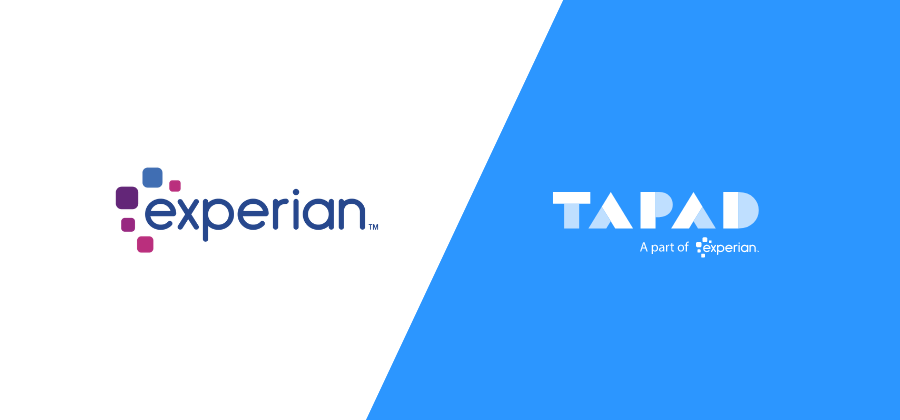
NEW YORK, Oct. 24, 2019 /PRNewswire/ -- Tapad, part of Experian and a global leader in digital identity resolution, today announced a new partnership with Retargetly, a leading independent full stack data company. The partnership combines Tapad's cross-device identity resolution technology with Retargetly's robust data toolset, allowing brands and agencies using Retargetly's platform to seamlessly access an expanded audience across devices, without compromising precision. In addition to reach expansion, Tapad's global, privacy-safe digital cross-device solution, The Tapad Graph, enables Retargetly's brand and agency clients a more holistic digital customer journey analysis, and efficient campaign capabilities like frequency capping and online attribution. At the same time, Tapad will be able to extend its presence into the LATAM region, tapping into Retargetly's existing regional footprint. "Combining The Tapad Graph's technology with Retargetly's platform will enable customers to make holistic, data-driven decisions that increase the ROI of their campaigns," said Chris Feo, SVP of Global Data Licensing and Strategic Partnerships at Tapad. "We can now offer advertisers the value of both technologies to optimize their marketing initiatives across the globe by creating seamless experiences across multiple devices and channels." Understanding a consumer's cross-device journey is a marketing necessity. A recent study showed that 75% of consumers expect a consistent experience from brands1. With the number of devices per individual rapidly increasing, digital identity resolution becomes essential to create that streamlined experience consumers crave. "Similarly to Tapad, our goal is to offer marketers a suite of products that can increase the ROI of their campaigns," said Juan Amuchastegui, Head of Product at Retargetly. "In order to achieve this, marketers need digital cross-device identity resolution to gain attribution, acquisition and reach expansion capabilities. We chose Tapad as our partner because The Tapad Graph has differentiated global scale, and privacy-safe measures, which we knew would benefit our clients' campaigns." Santi Darmandrail, Managing Director at Retargetly added, "Across the Americas our clients choose to work with us because of our scale, our precision, and our unique approach to what data can do to transform business outcomes. In that scenario, partnering with Tapad and integrating The Tapad Graph onto our platform was really a no-brainer and we are beyond excited to be making that available for our more than 700 clients across the region." To learn more about Tapad and our digital identity resolution products, visit our identity solutions page. Contact us today! About Tapad Tapad, Inc. is a global leader in digital identity resolution. The Tapad Graph, and its related solutions, provide a transparent, privacy-safe approach connecting brands to consumers through their devices globally. Tapad is recognized across the industry for its product innovation, workplace culture and talent, and has earned numerous awards including One World Identity's 2019 Top 100 Influencers in Identity Award. Headquartered in New York, Tapad also has offices in Chicago, Denver, London, Oslo, Singapore and Tokyo. About Retargetly: Retargetly is the leading independent data solution from Latam. Their proprietary platform processes over 25 billion data events a month and transforms them into actionable analytics that drive business results across the board. The recently launched Retargetly Audience Platform (RAM) is the number one data exchange in Latin America, with over 1000 active buyers and millions of dollars traded every year. Regargetly provides services across Latam and has offices in Buenos Aires, Mexico City, São Paulo and New York. For more information, visit www.retargetly.com

NEW YORK, Oct. 16, 2019 /PRNewswire/ -- Tapad, part of Experian and a global leader in digital identity resolution, and The Trade Desk, a global advertising technology leader, partnered to integrate The Trade Desk's unified ID solution in April 2019. The Trade Desk's unified ID solution's objective is to serve as a standardized cookie ID to help marketers reach more of their audience on the open internet. After an initial six month period, Tapad reports significant adoption rates and enhanced customer results since their joint integration in April. As a result of the partnership, client brands, agencies, DMPs/ DSPs, Data Providers, Mobile Networks and Measurement/Analytics Providers, saw increased match rates up to 38% and more global coverage without compromising precision. With this combined offering, Tapad's global, privacy-safe digital cross-device solution, The Tapad Graph, connects brands with consumers over 4 billion devices globally. "There is a need for digital identity solutions outside the walled gardens that can accommodate the need for both precision and scale," said Chris Feo, SVP of Strategy and Global Partnerships at Tapad. "Through our partnership with The Trade Desk, we are empowering companies to have a comparable digital identity resolution across the open web as compared to the walled garden environments." Over 25 companies who license The Tapad Graph, such as Annalect, Semasio, Retargetly, and ThinkCX, have also included The Trade Desk's unified ID solution as a key identifier in their graph output. "The vast improvement in scale that Tapad has seen illustrates the value digital identity resolution products can bring for brands," said Nate Gawel, General Manager of Data Partnerships at The Trade Desk. "We're looking forward to continuing work with Tapad to prove that the open internet can deliver the very same benefits many reserve for large platforms." Adoption of the unified ID solution allows all parties across the supply chain (SSPs, DSPs, DMPs and data providers) to utilize The Trade Desk's cookie footprint to increase their own cookie coverage across the global independent internet. For more information, please visit The Trade Desk's unified ID solution site, or https://www.experian.com/marketing/consumer-sync to learn more about Tapad's digital identity resolution products. About Tapad:Tapad, Inc. is a global leader in digital identity resolution. The Tapad Graph, and its related solutions, provide a transparent, privacy-safe approach connecting brands to consumers through their devices globally. Our one-of-a-kind Graph Select offering enables marketers the flexibility and freedom of choice to correlate devices to varied objectives, driving campaign effectiveness and business results. Tapad is recognized across the industry for its product innovation, workplace culture and talent, and has earned numerous awards including One World Identity's 2019 Top 100 Influencers in Identity Award. Headquartered in New York, Tapad also has offices in Chicago, London, Oslo, Singapore and Tokyo. About The Trade Desk:The Trade Desk™ is a technology company that empowers buyers of advertising. Through its self-service, cloud-based platform, ad buyers can create, manage, and optimize digital advertising campaigns across ad formats and devices. Integrations with major data, inventory, and publisher partners ensure maximum reach and decisioning capabilities, and enterprise APIs enable custom development on top of the platform. Headquartered in Ventura, CA, The Trade Desk has offices across North America, Europe, and Asia Pacific. To learn more, visit thetradedesk.com or follow us on Facebook, Twitter, LinkedIn and YouTube. Contact us today!

What generation already has 68 million consumers, is set to be the largest generation ever, and $360 billion of disposable income? While you may think these attributes describe millennials, they are actually a portrait of Generation Z, better known as Gen Z, the newest generation that is emerging in the marketplace. Gen Z is beginning to make an impact worthy of focusing your next auto marketing campaign around. Gen Z and the automotive market Made up of consumers born after 1996, Gen Z is ready to be noticed and become a force to be reckoned with in the market. In the automotive market alone, Gen Z made up 3.8 percent of all new vehicle registrations in the first quarter of 2019. While that number may seem small, consider the fact that in 2015—just four years ago—they only made up 0.5 percent of new vehicle registrations. These are statistics that should make automotive marketers pay attention. Digital consumption of Gen Z Most marketers tend to lump Gen Z with millennials – after all, they grew up with smartphones and social media, so how different can they be than the generation that came of age with the Internet? However, unlike millennials, Gen Z is considered a true “digital generation” – performing many of life’s day-to-day activities online. This means that they do a lot of research when shopping for a product. In fact, according to the Center for Generational Kinetics, 52 percent of Gen Z has looked at online reviews for a product while shopping in-store. But how do digitally native consumers impact automotive marketers? In order to sell cars, marketers’ messages need to be relevant. Like many other generations, Gen Z interacts with brands across a number of different devices and touchpoints. They’re constantly bombarded with messages and advertisements, so much so that it becomes information overload. Auto marketing to Gen Z To create consistent messages that resonate, brands need to communicate across these different touchpoints and tell a story that is relevant to your audience. For example, you wouldn’t show an advertisement of someone buying their dream sports car to a member of Gen Z. Most of these consumers are buying their first car, so it would typically make more sense to show them ads for economical, reliable, sedans or cross-over SUVs. Historically, automotive marketers have relied exclusively on CRM data, but this strategy isn’t effective when it comes to Gen Z, the fact of the matter is that they probably haven’t purchased a car from you previously. Identity resolution and Gen Z auto marketing The recipe for marketing success with Gen Z is identity resolution – combining your first-party identity signals across channels with third-party resources, as well as advanced technology, such as machine learning and artificial intelligence, to truly create and deliver campaigns that are relevant to the youngest generation. The more knowledge marketers have on your audience, such as demographics, life events and purchase behavior, enables them to tailor the messages to the audience in a way that will cut through the noise and resonate. As more members of Gen Z come into the marketplace, automotive marketers will want to ensure they’re meeting them where they are, delivering messages that matter to them. This will help marketers not only sell more cars, but also begin to create relationships that could last for years to come. Your identity resolution partner Experian is here to help you create an identity resolution strategy that will take your automotive marketing campaigns to the next level. We help brands put real people at the center of their business by resolving fragmented identity signals. Deliver personalized, relevant messages across channels to effectively target your ideal customers. Get started with identity resolution today!

For as long as the ad buying process has existed, most brands and agencies have put an emphasis on the channel – meaning there were specific campaigns for direct mail, email, TV, social media, banner ads, etc. In fact, the teams responsible for these campaigns often work in silos. But with more people consuming information through multiple channels, it’s important for brands and agencies to put the customer at the center of the ad buying process – to develop and implement true omnichannel campaigns. I recently wrote a byline article for Broadcasting & Cable that explored the concept of the “PeopleFronts.” While the Upfronts and Newfronts have dominated the ad buying world, brands and agencies need place larger emphasis on the customer. At the end of the day, the right mindset can open the door for more powerful campaigns and relevant messages that resonate with the consumer.

As summer fades, marketers are gearing up for another campaign cycle. It’s a process that repeats itself annually, but we can’t just copy-and-paste our plans. With each passing year, the media landscape changes drastically, as do the behaviors of the audiences we are trying to reach. As ever, marketers have to be strategic—and nimble—to reach the right customers at the right time, with messaging central to seasonal events and personal preferences. Marketers can ensure their messaging reaches the right customers with audience optimization. Reach target audiences this season It can be a hassle to create custom audience segments and bespoke creative messaging every time the seasons change, but now, more than ever, we must ensure brand campaigns are as timely, relevant and personalized as possible. In a world of multitasking and multiscreening, there’s an expectation among consumers that all communications they receive are relevant to them—especially from brands. This is why it’s critical to understand your audiences and how to engage them through the most effective channels. To help marketers win the battle for consumer attention—and sales—4C developed the Scope platform. This self-serve software arms brands with powerful tools for managing audiences and optimizing campaigns across channels including TV and digital. So, whether it’s building an efficient media plan, buying targeted ads, or measuring business outcomes, audience optimization is truly in scope. Deliver audience-based marketing messages across the TV and video space Recently, 4C teamed up with Experian to expand our audience marketplace across linear TV, OTT and social media. Brands using the Scope by 4C™ platform can leverage Experian data across a variety of planning and buying use cases, including audience-based linear TV planning and programmatic scatter buying; OTT campaigns across FreeWheel, Telaria, and SpotX; and social advertising on Facebook, Twitter, and Pinterest. Scope’s TV Planner allows marketers to combine historical cost and ad occurrence data with Experian audiences to create customized TV plans in minutes. The outputs go beyond GRPs to maximize in-target impressions for a secondary audience as well as indexing high against the primary demo. With audience-based TV planning brands can truly maximize their upfront buys and use the fantastic reach of linear television for seasonal performance marketing, not just brand awareness. OTT harnesses the big-screen, living-room impact of TV with the targeting precision and flexibility of digital. By using Experian segments to create OTT audiences in Scope, brands can really focus on creative strategy, using the immersive power of video to drive specific business outcomes. From a social perspective, we can combine the pinpoint targeting marketers have come to rely on from platforms like Facebook with advanced segmentation enabled by Experian. The output is high-performing audiences that can be reached at scale with dynamic creative to achieve unparalleled ROI. Focus marketing strategies on audience optimization this season Leveraging customized audiences across channels is the modern approach to marketing and has completely shifted the way marketers target consumers. With the relationship between 4C and Experian, there is now a better way for marketers to identify the most valuable potential customers, uncover the most appropriate messaging, and execute campaigns across the most engaging channels – during peak seasonal campaigns and every single day. Get started and contact us today!

With Tapad, part of Experian, technology, AdsWizz AudioMatic is the first Audio buying platform to offer cross-device identity resolution across the U.S. and EMEA NEW YORK and LONDON, July 17, 2019 /PRNewswire/ -- Tapad, part of Experian and a global leader in digital identity resolution, today announced a new joint capability with AdsWizz , the leading technology provider for digital audio advertising solutions. The partnership combines Tapad's digital cross-device technology with AdsWizz's AudioMatic buying platform, enabling the ability to connect audio ad experiences across screens. AudioMatic, AdsWizz's audio-centric buying platform, supports programmatic audio buying and entirely new audio ad experiences for listeners. The integration of The Tapad Graph onto its platform enables new opportunities for marketers to reach, engage and measure each interaction with their desired consumers on digital radio and podcasts channels, and across devices. This partnership makes AdsWizz the first audio buying platform to offer this enhanced cross-device identity capability in the US and EMEA markets. "Marketers need privacy-safe digital identity resolution to reach their consumers," says Tom Rolph, VP of EMEA at Tapad. "With audio becoming an increasingly powerful medium for engagement, it's important that our technology extends to this channel, which is why we are excited to announce our integration with AdsWizz's AudioMatic platform." Digital audio is experiencing high growth, with 84% of advertisers and agencies saying it will play a bigger role in their media plans in the future. Today, 60% of digital audio is consumed via a mobile device.* The Tapad Graph is the largest digital identity resolution graph with differentiated global scale. The partnership enables audio advertisers to leverage The Tapad Graph for enhanced attribution, analytics, and targeting. Alexis van der Wyer, CEO at AdsWizz, added, "Digital audio is increasingly becoming ubiquitous in our media consumption and in our daily digital interactions, and because of that, audio advertising offers tremendous opportunity to personally interact with consumers in every moment of their daily lives. By integrating with Tapad, we enable our advertising partners to increase the effectiveness and the relevance of their marketing messages across audio channels." To learn more about Tapad and our digital identity resolution products, visit our identity solutions page. *Digital Audio Exchange, "The Rise of Digital Audio Advertising," https://thisisdax.com/wp-content/uploads/2019/07/DAX-Whitepaper.pdf Contact us today! About Tapad Tapad, Inc. is a global leader in digital identity resolution. The Tapad Graph, and its related solutions, provide a transparent, privacy-safe approach connecting brands to consumers through their devices globally. Our one-of-a-kind Graph Select offering enables marketers the flexibility and freedom of choice to correlate devices to varied objectives, driving campaign effectiveness and business results. Tapad is recognized across the industry for its product innovation, workplace culture and talent, and has earned numerous awards including One World Identity's 2019 Top 100 Influencers in Identity Award. Headquartered in New York, Tapad also has offices in Chicago, London, Oslo, Singapore and Tokyo. About AdsWizz: AdsWizz has created the end-to-end technology platform that is powering the digital audio advertising ecosystem. AdsWizz powers well-known music platforms, podcasts and broadcasting groups worldwide with a comprehensive digital audio software suite of solutions that connect audio publishers to the advertising community. From dynamic ad insertion to advanced programmatic platforms to innovative new audio formats, AdsWizz efficiently connects buyers and sellers in digital audio. AdsWizz is headquartered in San Mateo, California, with an IT Development hub in Bucharest, Romania, and presence in 39 markets around the world. About AudioMatic: AdsWizz Demand Side, audio-centric DSP and audio buying platform, AudioMatic, enables programmatic audio buying and entirely new audio ad experiences that are proven to be more engaging and more effective, and have delivered measurable results for agencies and their brands all over the world. All the biggest ad agencies have used our programmatic trading platform, including Omnicom, GroupM, Havas, Publicis, Mobext, and more.

To set your brand apart from the competition (and thrive!), you need to get to know and communicate with your customers on a more personal level—this means knowing more than just their email or mailing address. It means building a relationship with them to turn them into loyal customers who keep coming back. To make this happen, retail marketers must engage with customers across all verticals and invest in true data-driven advertising. Consider the following: What do my customers do? If you know more about your customers’ lifestyles, interests and spending habits, you will have a better understanding of how they choose to spend their money and free time. Once you understand your core customer base, you can move on to how and when you should reach them. This starts with segmenting your customers and then reaching them across their preferred channels. You should then learn what motivates your customers in order to understand their buying behavior. Do they buy items spontaneously or do they spend a lot of time researching? Do they only buy things with a coupon or is free shipping more important? Lastly, determine what marketing is showing ROI so you can optimize your marketing campaign. To ensure your efforts are showing results and your marketing budget is getting the most bang for the buck, attribution is critical. Retailers should strive to get more value out of existing data, supplement it with third-party sources, and find better ways to manage it and extract valuable insights. Experian’s Customer Data Engine is the perfect solution to assist retailers with this challenge. This customer data platform helps provide you with a complete picture of online and offline customer engagement and delivers the data, tools, and insights needed to make decisions on reaching customers and lookalike prospects. Customer Data Engine is a centralized platform where first- and third-party data is managed and updated on an ongoing basis in a secure environment, providing retail marketers with analytical tools, lookalike prospects, campaign management, audience distribution and closed-loop measurement. Once retail marketers have a deeper understanding of what they need to know about their customers, they can create customized audiences using this data. Retailers value first-party data and often look at it first. Usually, this refers to online data about customer activity on a website or app, and can come from form and email submissions, views of merchandise or devices and things people searched for online. Although first-party data is gold, there is almost always additional information needed to fill in gaps. For instance, the need for recency, frequency and monetary (RFM) data is crucial. RFM data is a way for retailers to analyze their customers by using recency (how recent the customer made a purchase), frequency (how often a customer makes a purchase) and monetary data (how much money a customer spends on purchases). It gives the retailer the details of when the last time the customer made a purchase, how often does the customer make a purchase and how much did the customer spend. With this information, they will know who their most valuable customers are and be able to create customized audiences. To get a deeper understanding of your customers, solutions such as Experian’s ConsumerViewSM database can be leveraged to provide you with demographics, life event triggers, purchase data, lifestyle segmentation data and more. With thousands of data attributes available, it can take any business to the next level. According to global research firm, Coresight Research, retailers in the United States have announced 5,994 store closures in just the first 15 weeks of 2019. Changing consumer demands, and a volatile economy have made it difficult for retailers to keep pace. However, retail is not going to go away, and brands just need to be smarter about how they conduct business. Making sure you know and understand your customers is one of the ways to ensure repeat visits and set yourself apart from the competition. By enriching your data with 3rd party data from Experian, Customer Data Engine allows you to know and target your customer the same way that Direct to Consumer brands and retailers can and provides you with a full 360-degree view on what your customers are doing and how they are interacting with your brand. To learn more about Experian’s Customer Data Engine, contact us at (877) 902-4849 or experianmarketingsolutions@experian.com to learn more.

For decades, financial institutions relied on direct mail marketing and mass media for credit card offers and invitations to apply (ITA) for loans. Today however, credit marketing is going digital. In fact, according to Statista, financial services ranks 3rd in total digital ad spend this year. Lenders need to deliver relevant credit offers to consumers in the spaces and platforms where they interact. Below are three best practices to help financial services marketers make the most of their digital budgets and strategies. 1. Test new acquisition channels Consumers are no longer just in one place. They are constantly moving around and business strategies need to encompass that. Today’s consumers have multiple devices – a mobile phone, a TV, a laptop, a smartwatch, etc. and each of these devices uses a different tactic to attract consumers. Marketers need to reach their audience across all the channels with which they are engaging. To maximize performance and profitability, lenders need to leverage multiple channels to target and re-target their intended audience. They need to expand the reach of tailored prescreen ad campaigns by adding email, digital display ads, or other online channels to the traditional direct mail channel. This will help increase response rates, decrease length of time to conversation, and provide insight on consumer behaviors and preferences that cannot be achieved with a direct mail offer alone. 2. Target an audience that is right for you. Through a streamlined credit criteria selection process, and Experian’s expertise in audience creation, you now have the power to target the best consumers for your business needs in a fully customized approach. Financial services marketers should isolate appropriate populations – enabling you to make unique offers for different consumer segments and target them in the channels they leverage. In addition, you need to ensure your data is accurate and compliant. Fresh, accurate data enables you to pre-select the best prospects for your business need—right when they are most motivated to respond—and avoid making preapproved offers to nonqualified consumers. Also critical is that while we are able to use regulated data sets to reach consumers, we need to do so with extra caution while meeting FCRA guidelines. It is imperative to honor consumer opt-outs across all channels and ensure you have audit rights with media publishers. The Experian Ascend Technology Platform gives financial institutions the power to integrate client data, industry-specific data feeds and the power of Experian’s unique capabilities in data, analytics, machine learning and advanced AI to deliver enhanced opportunities throughout the customer lifecycle, including lending offers to acquire new customers and cross-sell to existing ones. 3. Test and adjust your campaigns Before the world of digital, it was difficult for financial institutions to track campaign impact on audiences. By employing online promotions, lenders can see how much interaction consumers are having with their promotional media. Financial services marketers should take processes and campaigns that have worked in the past and perform small, iterative tests using different channels. We believe that by adding a digital touch to a client's direct mail prescreen campaign, there is the potential to experience a lift above direct mail response rates; decreased length of time to conversion, and we can provide insight on consumer behaviors and preferences that cannot be achieved with a direct mail offer alone. It is important to test and optimize accordingly. Experian is also at the forefront of the digital credit revolution with Amplified Prospecting™. Experian’s Amplified Prospecting empowers lenders to deliver relevant firm offers of credit to prescreened consumers via multiple digital channels, including email, online display advertising and social media. Simply put, it allows you to timely engage the most desirable consumers where they’re increasingly consuming information and media today – improving your response rates and return on marketing investment. Experian is a leader in the credit revolution, offering more ways for consumers to secure credit including the industry-first Text for Credit™, which allows users to initiate and complete the credit application process within minutes with a simple text message. In addition, Experian recently introduced Experian Boost, a revolutionary new online tool that can instantly improve your credit scores and help the 100 million Americans that don't have access to credit today, either because their credit scores are too low, or because they don't have enough credit history. With faster, more efficient data integration and processing you can more accurately target leads, achieve better response rates, and optimize your marketing spend. To learn more about Experian’s Financial Services solutions, contact us at (877) 902-4849 or experianmarketingsolutions@experian.com to learn more!

Sixty-Nine Percent Organic Sales Growth Spurred by Expanded Business and Continued Investment in The Tapad Graph™ NEW YORK, May 7, 2019 /PRNewswire/ -- Tapad, a part of Experian, a global leader in digital identity resolution, today announced a record start to the year, following its highest earning year in the company's history. Since January, Tapad has experienced a 69 percent organic increase in global revenue; with strategic investments in talent, continued high retention rates, and an expanded range of clients across global markets. Globally, Tapad increased its client base across multiple categories and verticals, catering to agencies, brands, telecoms, and data providers. The Tapad Graph™'s varied use cases and differentiated global scale have been instrumental to the company's overall success to-date. With an ongoing investment in product, and expected feature releases slated for 2019, the company anticipates these accomplishments to continue. "Since the inception of our business, Tapad has heavily focused on enabling marketers to boost the performance of their campaigns with the help of our advanced digital identity resolution technologies," said Sigvart Voss Eriksen, CEO at Tapad. "While we continue to grow, creating privacy-safe solutions that solve marketers evolving needs remains integral to our evolution. As pioneers in cross-device, we're constantly innovating and pushing ourselves to be at the forefront of industry change. Our leadership in the space is recognized across the industry, as is evident by our current success." In addition to partner expansions, Tapad also invested in new talent. In February, Tapad announced Ajit Thupil as the company's first Senior Vice President of Identity, deepening the company's commitment to creating ground-breaking digital identity resolution products for brands, agencies and platforms. Tapad's investment in talent has been recognized by One World Identity's 2019 Top 100 Influencers in Identity Award and by ClickZ's 2019 Marketing Technology Awards. "At Tapad, our focus is on continuously advancing our digital identity resolution products to cater to the needs of marketers across industries," said Chris Feo, SVP of Global Data Licensing and Strategic Partnerships at Tapad. "As a part of that commitment, we are consistently growing our partner base, product features, and widening our reach on a global scale. We're excited to sustain our growth throughout 2019." To learn more about Tapad and our digital identity resolution products, visit Experian.com Open job opportunities across the globe can be found on Tapad's career page here: https://www.experian.com/careers/ About Tapad Tapad, Inc. is a global leader in digital identity resolution. The Tapad Graph™, and related solutions, provide a privacy-safe approach to connecting device identifiers to brand and marketer data, thereby allowing marketers around the world to maximize campaign effectiveness. Tapad is recognized across the industry for its innovation, growth and workplace culture, and has earned numerous awards, including the TMCnet Tech Culture Award. Based in New York, Tapad also has offices in Chicago, London, Oslo, Singapore and Tokyo, and is a wholly owned subsidiary of Telenor Group. Contact us today!